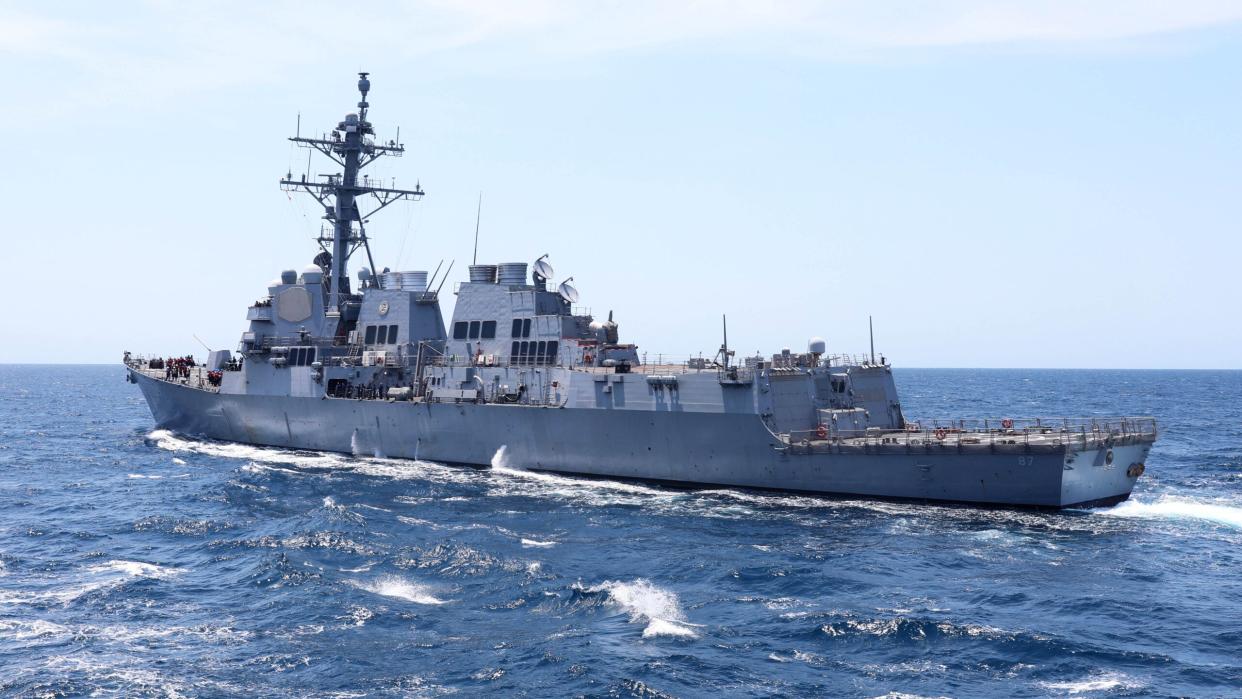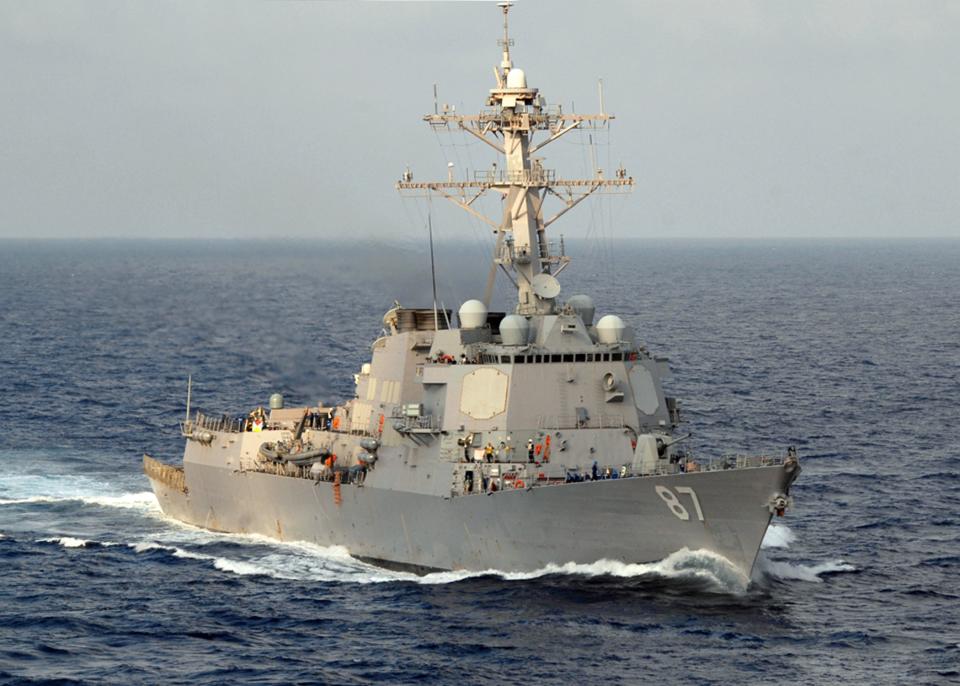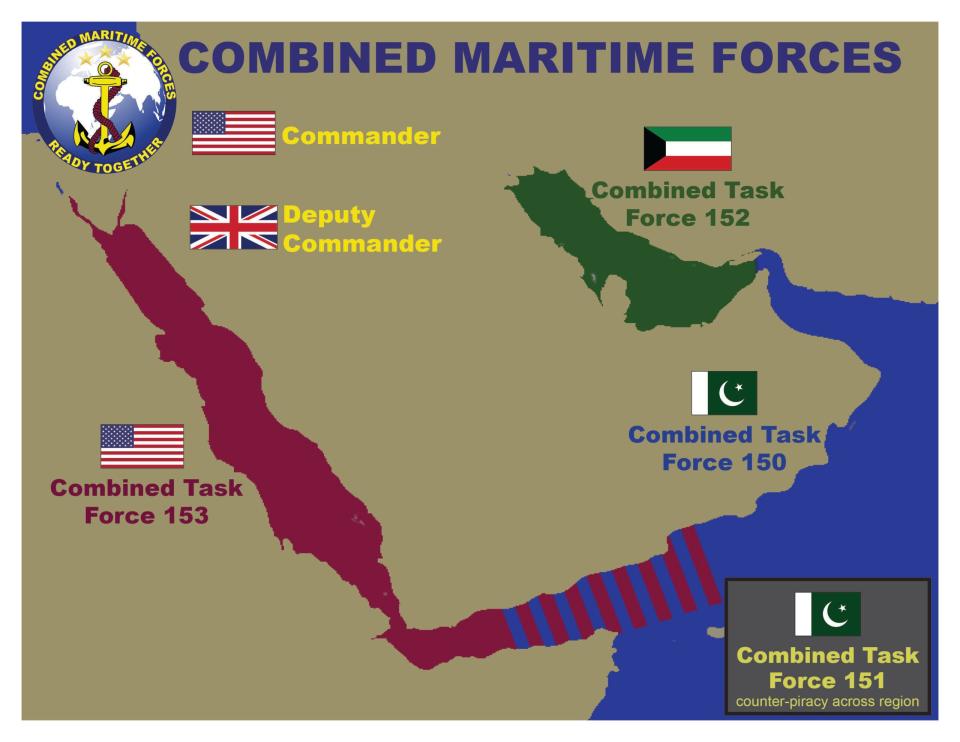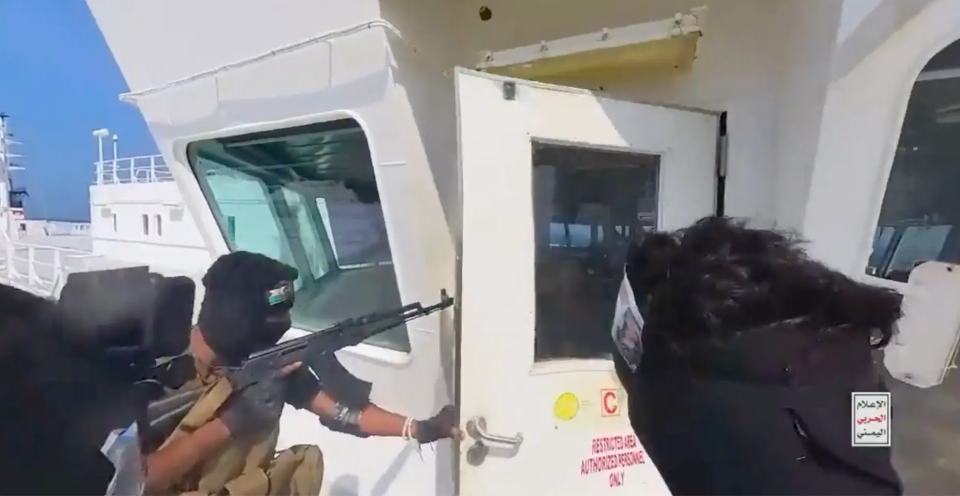Claims Swirl Around Apparent Missile Attack On U.S. Destroyer (Updated)

Two ballistic missiles fired from Yemen came down in the Red Sea in the vicinity of the destroyer USS Mason (DDG-87). At the time, the warship was concluding its response to a distress call from the M/V Central Park, a commercial vessel that had itself come under attack from a group of armed raiders that had attempted to board it. There are now several different theories as to the identity of those raiders.
A U.S. military official told The War Zone that the Pentagon is still trying to determine whether the USS Mason was directly targeted by the ballistic missiles and is also looking into what kind of ballistic missiles were fired.
It is known, for example, that the Iran-backed Houthi rebels possess an anti-ship ballistic missile (ASBM) capability. At least three ASBMs are reportedly available to the group, all based on Iranian ballistic missile designs, adapted for anti-ship applications. Iran, for its part, has repeatedly demonstrated the use of ASBMs in recent years.
https://twitter.com/fab_hinz/status/1729058180091756767 https://twitter.com/inbarspace/status/1566059094162685952
While an attempted ASBM strike against one or both of the vessels is a distinct possibility and would be a historic event in itself, it could also be the case that the missiles were intended to miss the ships, providing only a ‘warning shot’ or token display of force. In that scenario, the missiles may have been ASBMs, but could equally have been standard ballistic missiles fired over the sea. The Houthi inventory includes various short- and medium-range surface-to-surface ballistic missile types that could have been used.
https://twitter.com/Aviation_Intel/status/1728965411671257095?s=20
According to a statement provided by U.S. Central Command (USCENTCOM), at around 1:41 am local time on November 27, two ballistic missiles were fired from Houthi-controlled areas in Yemen “toward the general location” of the USS Mason and the M/V Central Park.
https://twitter.com/CENTCOM/status/1728982985238843665
“The missiles landed in the Gulf of Aden approximately 10 nautical miles from the ships,” the U.S. Department of Defense confirmed. “There was no damage or reported injuries from either vessel during this incident.”
The missiles were launched as the USS Mason was concluding its response to a distress call from the M/V Central Park. The U.S. warship was likely also accompanied by the Japanese Murasame destroyer Akebono (DD-108). Other allied ships and aircraft also appear to have been involved.

https://twitter.com/Schizointel/status/1728982142460281340
The commercial vessel in question, a Liberian-flagged chemical tanker owned by an Israeli business magnate, had reported that it was under attack “by an unknown entity.”
According to the Pentagon’s account, “Upon arrival, coalition elements demanded the release of the vessel. Subsequently, five armed individuals debarked the ship and attempted to flee via their small boat. The Mason pursued the attackers resulting in their eventual surrender. The crew of the M/V Central Park is currently safe.”
According to its owner, Zodiac Maritime, the M/V Central Park was carrying phosphoric acid at the time of the attempted attack. The company said that there were 22 sailors onboard from Bulgaria, Georgia, India, the Philippines, Russia, Turkey, and Vietnam. All are said to be unharmed.
https://twitter.com/ANCALERTS/status/1728906615049658529
“We would like to thank the coalition forces who responded quickly, protecting assets in the area and upholding international maritime law,” the company said.
While reports describe Zodiac Maritime as the owner of the tanker, that company says that the vessel is owned by Clumvez Shipping Inc. Certainly, however, there is a direct connection to Zodiac Maritime, a London-based company that is part of the Zodiac Group, owned by Israeli billionaire Eyal Ofer. Zodiac Maritime is also the owner of the oil tanker M/V Mercer Street, which was subject to a fatal drone attack by Iran, off the coast of Oman, back in 2021.
A warning issued by the U.K. Maritime Trade Operations (UKMTO) yesterday described “a report of two black and white craft carrying eight persons in military-style clothing approaching an MV to 0.5 nautical miles, one small craft on each quarter.” This sighting was in the same area as the attempted seizure of the M/V Central Park, although it cannot be confirmed that these were the attackers.
https://twitter.com/UK_MTO/status/1728742598704263585
The UKMTO also said the M/V Central Park was located over 35 miles south of Yemen’s coast, and approximately 50 miles east of Djibouti at the time of the attack.
The internationally recognized government in Yemen has blamed the Houthis for the attempted seizure of the vessel, although the rebels, who control the Yemeni capital Sanaa, did not immediately claim responsibility.
On X (formerly Twitter), Hussein Al-Ezzi, the Houthi Deputy Foreign Minister said: “Certainly, Sanaa is more concerned about the safety of navigation and more respectful of the interests of the world, and this is something we have proven practically throughout the past. We remind once again that navigation in the Red Sea will remain safe and secure for all ships, with the exception of only those of the criminal entity, until its aggression against children and defenseless civilians in oppressed Gaza ends.”
Meanwhile, a statement from Yemen’s government-in-exile pinned the blame squarely on the Houthis: “The Yemeni government has renewed its denunciation of the acts of maritime piracy carried out by the terrorist Houthi militias with the support of the Iranian regime, the most recent of which was the hijacking of the Central Park.”
The initial USCENTCOM statement was worded carefully to avoid directly attributing either the attempted seizure of the M/V Central Park or the missile attack to the Houthis. The Iran-backed group expressed support for Hamas in the wake of the October 7 attack on Israel and has launched constant attacks since, both against Israel and against other vessels in the region.
Subsequently, reports emerged that the Pentagon assessed that the five armed individuals who attacked the M/V Central Park were Somali, with the incident being described as “piracy-related.” That raises the question as to if and how the attempted seizure was related to the Houthis.
https://twitter.com/laraseligman/status/1729176042869563783
As an aside, it should be noted that there has been at least one previous example of a faked hijacking by Yemenis posing as Somali pirates, although that 2011 incident was motivated by insurance fraud.
The USS Mason is currently deployed in the region as part of the Dwight D. Eisenhower Carrier Strike Group, which entered the Persian Gulf Sunday, having passed through the Strait of Hormuz. At the time of the attack, the USS Mason was assigned to the coalition counter-piracy Task Force 151 (TF-151).
https://twitter.com/CENTCOM/status/1728899895602679992
Currently commanded by the Philippine Navy, TF-151 is one of five operational task forces under Combined Maritime Forces, a multinational naval partnership of 38 nations. In the words of the Pentagon, the Combined Maritime Forces “promote security, stability, and prosperity across approximately 3.2 million square miles of international waters, encompassing some of the world’s most important shipping lanes.”

“Maritime domain security is essential to regional stability,” said Gen. Michael Erik Kurilla, USCENTCOM commander, in response to the latest incident. “We will continue to work with allies and partners to ensure the safety and security of international shipping lanes.”
Regardless of the missiles used and whether the USS Mason was an intended target, the incident marks a significant escalation in tensions between the Houthis and the U.S. military and its allies in the region.
While the Houthis had not threatened a U.S. Navy vessel in this way in the recent past, they had previously hijacked the M/S Galaxy Leader in the Red Sea, in an incident you can read all about here. That vessel is now being held in the port of Al-Hudaydah in Yemen.

Combined, the actions launched against commercial shipping, and also now USS Mason, indicate that the busy waters of the Gulf of Aden are now extremely hazardous for different types of maritime traffic.
The area in which the latest incident took place is ostensibly controlled by Yemeni government forces. However, it’s within reach of the Houthis, not only in the form of their maritime militia but also the various longer-range missiles available to them.
Last week, meanwhile, the destroyer USS Thomas Hudner (DDG-116) shot down multiple drones on Thursday morning local time. This followed an incident earlier this month in which the same destroyer shot down a drone launched from Yemen over the Red Sea.
Commercial vessels elsewhere have also come under recent attack by the Houthis. As well as the M/S Galaxy Leader in the Red Sea, the container ship, CMA CGM Symi, also Israeli-owned, came under attack on Friday in the Indian Ocean. This attack has been blamed on an Iranian Shahed-136-like one-way attack drone.
https://twitter.com/JasonMBrodsky/status/1728359766576279885
Noteworthy are the reports that both the M/V Central Park and the CMA CGM Symi were sailing in recent days without their Automatic Identification System (AIS) activated. In both cases, this system, which records a ship’s position and identity, was very likely switched off to help protect them against potential threats.
According to the Associated Press, “In the Central Park’s case, the vessel had last transmitted four days ago after it left the Suez Canal heading south into the Red Sea.”
While there are multiple scenarios in which the current Israel-Hamas war could erupt into a wider regional conflict, at present, there is clearly a very real threat to global shipping. In particular, the Houthi rebels are now a major player, with open threats against Israeli-linked vessels as well as attacks against Israel itself using ballistic missiles and long-range drones.
As for the United States, it remains to be seen if the ballistic missiles fired toward the USS Mason prompt any kind of direct response. Back in October 2016, Houthi missiles were launched against U.S. Navy vessels including USS Mason. On that occasion, the destroyer had launched two SM-2 Standard surface-to-air missiles and an Evolved Sea Sparrow Missile (ESSM) to defend itself. The warship came under attack again only days later, this time followed up by a Tomahawk cruise missile attack on coastal radar sites operated by the Houthis.
https://www.youtube.com/watch?v=MJKfFg84Gmc
Certainly, U.S. and allied military assets will remain on guard against similar actions in the region, with the U.S. Navy presence already having been bolstered by the arrival of the Dwight D. Eisenhower Carrier Strike Group.
Among the other warships now accompanying the Eisenhower are the cruiser USS Philippine Sea, the destroyers USS Gravely and the USS Stethem, and the French frigate Languedoc.
This is clearly a time of high tensions in the Red Sea, not to mention in other waters in which the Houthis are able to threaten international maritime shipping, whether commercial or warships of the U.S. Navy and its allies.
Staff writer Howard Altman contributed to this report.
Update: 7:31 PM Eastern:
A U.S. military official tells The War Zone that it is still unclear which of the vessels was targeted by the missile attack.
“Because the Mason and the Central Park were both in the direct path, it is really hard to tell which one they were aiming for, which is why the Mason reported they were being fired upon,” said the official, who spoke on condition of anonymity to discuss operational details.
The Pentagon is still unable to say what kind of missiles were fired because their remains have yet to be recovered, the official said. It appears that only one splashed into the water and it is unclear what happened to the other. Fox News reported that it blew up mid-air, but the official we spoke with could not confirm that.
The armed individuals who attempted to commandeer the Central Park are still on board the Mason, the official told us. They initially said they were Somalis when captured but that claim is still being investigated, the official added.
Contact the author: thomas@thedrive.com

